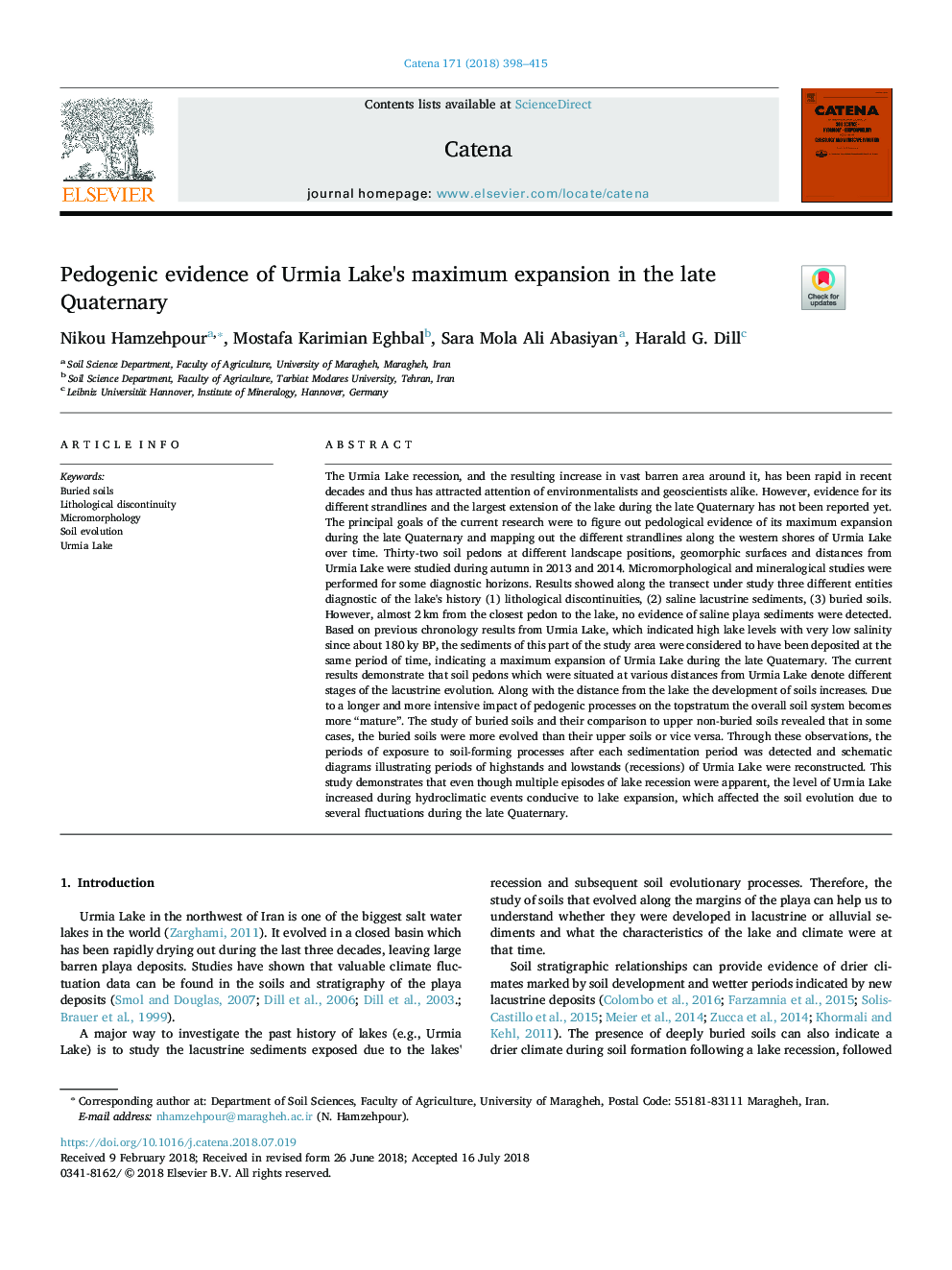| کد مقاله | کد نشریه | سال انتشار | مقاله انگلیسی | نسخه تمام متن |
|---|---|---|---|---|
| 8893371 | 1629183 | 2018 | 18 صفحه PDF | دانلود رایگان |
عنوان انگلیسی مقاله ISI
Pedogenic evidence of Urmia Lake's maximum expansion in the late Quaternary
ترجمه فارسی عنوان
شواهد زیستشناختی حداکثر گسترش دریاچه ارومیه در اواخر
دانلود مقاله + سفارش ترجمه
دانلود مقاله ISI انگلیسی
رایگان برای ایرانیان
کلمات کلیدی
خاک های خالی انحطاط سنگ شناسی، میکرومورفولوژی، تکامل خاک، دریاچه ارومیه،
موضوعات مرتبط
مهندسی و علوم پایه
علوم زمین و سیارات
فرآیندهای سطح زمین
چکیده انگلیسی
The Urmia Lake recession, and the resulting increase in vast barren area around it, has been rapid in recent decades and thus has attracted attention of environmentalists and geoscientists alike. However, evidence for its different strandlines and the largest extension of the lake during the late Quaternary has not been reported yet. The principal goals of the current research were to figure out pedological evidence of its maximum expansion during the late Quaternary and mapping out the different strandlines along the western shores of Urmia Lake over time. Thirty-two soil pedons at different landscape positions, geomorphic surfaces and distances from Urmia Lake were studied during autumn in 2013 and 2014. Micromorphological and mineralogical studies were performed for some diagnostic horizons. Results showed along the transect under study three different entities diagnostic of the lake's history (1) lithological discontinuities, (2) saline lacustrine sediments, (3) buried soils. However, almost 2â¯km from the closest pedon to the lake, no evidence of saline playa sediments were detected. Based on previous chronology results from Urmia Lake, which indicated high lake levels with very low salinity since about 180â¯ky BP, the sediments of this part of the study area were considered to have been deposited at the same period of time, indicating a maximum expansion of Urmia Lake during the late Quaternary. The current results demonstrate that soil pedons which were situated at various distances from Urmia Lake denote different stages of the lacustrine evolution. Along with the distance from the lake the development of soils increases. Due to a longer and more intensive impact of pedogenic processes on the topstratum the overall soil system becomes more “mature”. The study of buried soils and their comparison to upper non-buried soils revealed that in some cases, the buried soils were more evolved than their upper soils or vice versa. Through these observations, the periods of exposure to soil-forming processes after each sedimentation period was detected and schematic diagrams illustrating periods of highstands and lowstands (recessions) of Urmia Lake were reconstructed. This study demonstrates that even though multiple episodes of lake recession were apparent, the level of Urmia Lake increased during hydroclimatic events conducive to lake expansion, which affected the soil evolution due to several fluctuations during the late Quaternary.
ناشر
Database: Elsevier - ScienceDirect (ساینس دایرکت)
Journal: CATENA - Volume 171, December 2018, Pages 398-415
Journal: CATENA - Volume 171, December 2018, Pages 398-415
نویسندگان
Nikou Hamzehpour, Mostafa Karimian Eghbal, Sara Mola Ali Abasiyan, Harald G. Dill,
